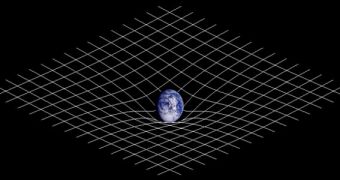For decades, physicists have been hypothesizing about the existence of a fourth dimension, or even a fifth, seventh and a tenth one. But figuring out how each of them works and what holds them together has been no easy task, as proven by the fact that the brightest minds in the field today, which are still working on these issues, have yet to come up with answers. An Austrian researcher has recently proposed that quantum physics analyzes the world around us in less than three dimensions, which means that we may see it for something that it's really not.
According to Vienna University of Technology Institute of Theoretical Physics researcher Daniel Grumiller, what we perceive around us, namely the three dimensions (length, width and depth), complemented by the fourth hypothetical one (time), may be just the way in which our brains perceive information. To support his statement, he points to the example of holograms, those security features found on various electronics and software packages, meant to show the user that their product is genuine.
The markings on these holograms are usually designed in such a way that they appear to be three-dimensional, although naturally they are printed on a two-dimensional material. Grumiller says that this proves people can easily believe that something is depicted in 3D, even if they know for sure it's not. “The question, how many dimensions our world really has, does probably not even have a proper answer. Depending on the particular question we are trying to answer, either one of the approaches may turn out to be more useful,” the researcher explains.
The most amazing feat of the new theory is that it can formulate hypotheses about various aspects of the universal space-time, without actually having to incorporate all the variables. Again, this only applies to quantum theories. For instance, a quantum theory of gravity will take place in just three dimensions instead of four, and will feature distances, but not the gravity-related numbers themselves.
However, Grumiller maintains, they can accurately account for the existence of such objects as black holes and gravitational waves, areas of the Cosmos where gravity is the most powerful force around. The researcher's newest gravitational theories include two spatial dimensions and time, but it can all be mapped in a two-dimensional gravitationless quantum theory.

 14 DAY TRIAL //
14 DAY TRIAL //